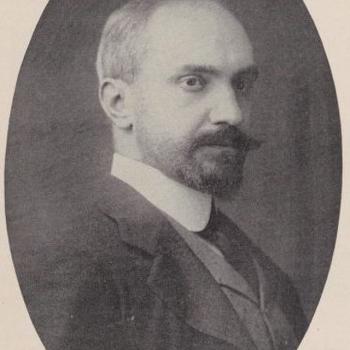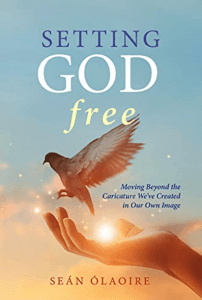Note: This is the third of three essays. Number one was entitled: The infallibility of the mass media; number two was entitled: The infallibility of science; and this final one is entitled: The infallibility of the Bible.
 The infallibility of the Bible
The infallibility of the Bible
And the fourth shock to my hopes for some bastion of infallibility came as I studied the Bible. It, too, for all its wisdom and insights, has been filtered, edited, redacted and massaged by hundreds of generations of priests, translators and, yes, even emperors.
I have learned lots from newspapers, from theology, from science and from the Bible, but I am duty bound to separate truth from tactic, and fact from fiction; to recognize metaphor and allegory and distinguish those from historical data.
A. Levels of Revelation
Christians, who consider the Bible to be the revealed word of God, actually span a very wide spectrum. At one end, are those who claim that it is inspired by God whose Holy Spirit influenced the words, message and collation of the Bible. Then comes the position that it is also infallible when it comes to matters of faith and practice but not necessarily in scientific or historical matters. Position number three is occupied by those who claim that its inerrancy extends to all matters – no exception. Then comes biblical literalism whose adherents further claim that not only is it inerrant on all topics but that its meaning is clear to the average reader.
It gets even more confusing. Most evangelical Bible scholars claim that only the original texts in the original languages were inspired; while other groups – like the followers of the King-James-only Movement – are convinced that only the KJV is inerrant. In 1546, the Council of Trent decreed St. Jerome’s translation into Latin of the original Hebrew/Aramaic and Greek language versions (called The Vulgate) – done around 380 CE – to be the only authentic and official Bible of the Latin Church.
As you can see it is far from clear what the ideas of “revelation” and “divine inspiration” of the Bible actually mean. There is lots of wiggle room. Many scholars point out that the biblical texts come from a creative dialog between ancient oral traditions and different faith communities over an extended period of time. So, there were political, cultural, theological, economic and even hygienic issues involved.
B. Major Redactions
Modern scholarship employs three main techniques in understanding the time-of-composition of various parts of the Bible. Historical Analysis seeks to establish the “intent” of each writer, so as to be able to translate accurately. Materialist Analysis looks at the social, economic and political environments at the time of composition. And Structural Analysis, especially using the 20th century discipline of Semiotics, tries to identify internal consistencies and inconsistencies within the texts. Semiotics is the science of understanding the grammar, not just of individual sentences (e.g., subject, predicate, object…), but of an entire text. Texts have a natural flow and when edits or redactions are done they leave footprints in the text.
Each organization, from tennis clubs to nations, needs a variety of documents to establish itself. In the case of a culture, it needs “stories” of the ancestors to bind them as “family”; epics to celebrate (and exaggerate) their past heroes and heroines; laws to establish the ground rules, poetry/prayers to focus their spirituality; oracles/prophets to align them with God’s precepts; teachings to steer them on the journey; and “wisdom” writings to reflect on the great existential issues.
The Bible employs all of these kinds of document and, using the three kinds of analysis just mentioned, scholars can identify when and where various parts of the Bible come from. In summary, they’ve discovered four great origins/redactions which are known as J, E, P and D – for reasons which will shortly become obvious.
J (or Y in Hebrew) gets its name from how God is called in this group of writings i.e., Yahweh. It represents the oldest writings beginning around 950 BCE. It is the sacred history of the southern kingdom of Judah and centered on a promised land, a chosen king and a temple-of-the-divine; and it treats of the beginnings (Adam and Eve), the Patriarchs (Abraham, Isaac and Jacob) and the core story of Exodus and Moses. The author of J is a great storyteller and God is presented as very “human” – he is a gardener, potter, surgeon and tailor. He bargains with Abraham, is quite forgiving and always ready to bless.
E gets its name from how God is called in this group of writings i.e., Elohim. It begins to produce its writings around 750 BCE. The E tradition speaks of a very different kind of God than is presented in J. He is accessible mainly through dreams or in spectacular manifestations or theophanies. No images allowed! E is very interested in moral questions and quite focused on sin. Real worship is about obeying God, keeping the covenant and rejecting false gods.
P gets its name from the “Priestly” documents of the Bible which were written during the Babylonian captivity – 587 to 538 BCE – and later; especially under the influence of Ezekiel. P has a very dry style; it loves figures and lists. The vocabulary is very technical, having to do with liturgy/cult/worship. Genealogies appear often because it is written during the Babylonian captivity and it is vital that the exiles retain a sense of history and belonging. The huge emphasis on worship covers pilgrimages, festivals and the importance of priests. The priests replace the role of the king in J and of the prophets in E. Because of its unique style it is the easiest of the four traditions to identify when reading the Torah.
D gets its name from the book of Deuteronomy. It is a collection of laws that was begun in the northern kingdom but, after the Assyrian conquest, in 721 BCE, was taken south and hidden in the Temple. During renovations there in 612 BCE it was rediscovered, completed and offered as a rededication of the people to God. It became the Book of Deuteronomy and also influenced other books of the Bible. The style is very emotional and put into the mouth of Moses – though it was composed over 600 years after the time of Moses.
JE Around 700 BCE, scholars in Jerusalem under the direction of king Hezekiah, began to amalgamate J and E – the sacred histories of the southern kingdom of Judah and the (fallen) northern kingdom of Israel. It was an effort to heal the results of the civil war of 933 BCE. It is known to scholars as JE.
JEPD Over a period of some 500 years, the religious leaders had gone over their history several times in order to find meaning in their experiences as a culture. Now – around 520 BCE, under Ezra the priest-scribe – they began to bring the four main attempts together into a single work. It was completed around 400 BCE and is known as “the Pentateuch” in Greek or “Torah” in Hebrew. It consists of the five first books of the modern Bible – Genesis, Exodus, Leviticus, Numbers and Deuteronomy. The books of Genesis, Exodus and Numbers contain input from J, E and P; Leviticus is a pure P document and Deuteronomy is a pure D document.
A simple example will illustrate this weaving of sources. The story of the escape from slavery in Egypt – contained in chapters 13 and 14 of the book of Exodus – has J, E and P interwoven into a single narrative, but it oscillates between them throughout the two chapters drawing upon J eleven times, E eight times and P eight times.
The Bible is a work of love and dedication that spanned many generations of priests, prophets and scribes. Each redaction was an attempt to make sense of their relationship with their God and express it in a way that the people of each era could comprehend.
C. A Synopsis of the Development of Torah
Once David had established himself as king of the twelve tribes and his son Solomon had built the first temple, the scribes, using the orthography borrowed from the Phoenicians, began to record the sacred history of Judea. The king (“son of God” according to the installation rite), the temple, its priests and ritual became the focus of this record. They went on to invent “creation stories”, “how stories” and “why stories” (like all cultures). This began around 950 BCE and is the J (Yahwist) stream.
Very shortly however, on the death of Solomon in 933 BCE, the kingdom split into Israel (with ten tribes) in the north of the country and Judah (with two tribes) in the south. However, none of the kings of the north were descended from David and so were not “sons of God” and there was constant juggling for the throne. In fact, between 933 and 721 BCE, of the 19 kings of Israel, eight were assassinated. Because they did not want their people going to Jerusalem to worship, instead of unity built around the king, temple or priesthood, it was the prophets e.g., Elijah, Amos, Hosea who held the spiritual authority. Beginning around 750 BCE they began to record the sacred history of the north (Israel) which scholars call E. They also began to collect the laws, but in 721 BCE the northern kingdom was overrun by the Assyrians and most of the people deported. A few of the leaders escaped to Judah bringing with them both E and the collection of laws.
In an effort to heal the 212-year rift, both sets of scholars got together to stitch J and E into a single work (which modern Bible scholars call JE). Compromises were made and the editing was far from seamless, with two or more versions of some events included. The collection of laws was deposited in the temple library and forgotten until 612 BCE when major temple renovations re-discovered it. The king at this time, Josiah, was a very pious man and had the scholars complete this book-of-laws and, in a grand ceremony, had it read to the assembled multitudes who renewed their covenant with God. This document is what we now know as Deuteronomy (D). To give it extra traction, it was written as a series of injunctions from Moses; but, in fact, it was compiled 600 years after the time of Moses.
Soon after (597 BCE), however, Judah was overthrown by the Babylonians and the people deported. The priests in exile, under the leadership of Ezekiel, created a new stream of writing to remind the people of their origins and commitment to God. This work was done around 550 BCE and led to the P (priestly) document.
When they returned from exile in 538 BCE and rebuilt the temple, the scribes united all four sources, now known as JEDP. The original name for it is Torah in Hebrew and Pentateuch in Greek. It consists of the first five books of the Bible – Genesis, Exodus, Leviticus, Numbers and Deuteronomy.
Around 400 BCE, in a major redaction, under the guidance of Ezra, the writings of the prophets (Nevi’im) and the wisdom literature (Ketuvim) were added to the canon; hence the total work is known as TaNaKh or The Hebrew Bible.
One final comment. Much later, when the final decision was to be made about which books to include or exclude, the Jewish scholars used two criteria. To qualify for admission, a book had to have been written (i) in Hebrew and (ii) before 400 BCE. Both criteria were misapplied. Some books, whose originals were written in Hebrew but were lost and which “now” existed only in translation, were excluded, only for the originals to surface when it was “too late.” And some books which purported (according to internal claims) to have been written before 400 BCE were discovered, through modern scholarship, to actually have been written much later. You win some, you lose some.

















